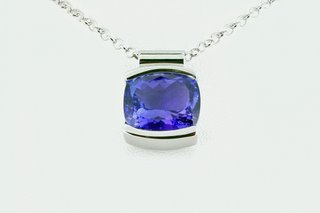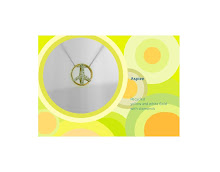It's Like Butter!
With the amazing rise in the populatity of Platinum jewelry over the last several years, we get a lot of questions about the benefits of platinum and its advantages over gold.
The general assumption is that platinum is stronger and simply better than white gold. While platinum is certainly more exclusive by virtue of scarcity as well as the temperament of the metal when working with it, is it always better? Is a Porsche better than a minivan? More expensive, more exclusive yes, but better? It depends on what you need in a car.OK, back to platinum for a second. Gold jewelry is usually 14k or 18k, regardless of the color. 14k white gold is 58.5% gold by weight, alloyed with nickel and copper. 18k gold is 75% pure gold. In white gold, 18k is much harder because the nickel plays a larger role than copper. Nickel has the dominant color gene in this relationship, and is also very hard. Platinum is alloyed with other platinum group metals, but at a purity level of 90%-95% platinum. This is the first factor in the higher price of platinum jewelry. Platinum is also much heavier than 14k or 18k gold. The price of platinum as of this writing is almost double that of gold. Thus, for a design in platinum versus gold, the platinum ring will weigh more, have a higher precious metal content at a much higher price per ounce. Platinum also demands much more time in just about every stage of fabrication, once again inflating the cost of platinum jewelry.
Now for the practical differences, lets talk food. Platinum will be represented by raw pastry dough; gold by the baked pastry. We have already established that for the same volume, platinum, like the dough, weighs more than gold, or the puffy baked pasty which has expanded in baking. But how do you wear food and get away with it? Well, if we run our finger across the pastry dough, the effect is a valley and two soft peaks. No crumbs, no residue on our finger. When we do the same to the baked pastry (white gold), we see a small scrape on the surface, but have a mess of crumbs all over the counter. The lesson here is that platinum does not easily abrade. It moves around, but all of the platinum we started with remains together. Gold is abraded, losing small particles every time it rubs against a harder surface.
The practical application of this is that platinum will show those peaks and valleys in a wider design more than white gold. The surface of platinum eventually becomes work hardened and these blemishes blend back into each other, forming a soft whitish grey appearance. White gold will maintain more of a shiny chrome appearance, though a yellowish cast is generally apparent as the pure gold in the alloy tries to exert itself. This is why traditional platinum rings have been finer detail, more delicate settings like filigree. The durabilty of platinum is crucial to these designs. Broader, heavier designs often do better in white gold where the scars of wear are not so great, and a little loss of metal over the long term is negligible.
One last thing on "hardness". Platinum is considered hard because of its resistance to abrasion. It actually is very malleable (it bends easily). These two qualities make platinum ideal for most diamond setting. It bends over the gemstone without a fight, and wears very well once the setting is complete.
If you like the feel of something heavier on your finger with fine detail, and your budget will accommodate the added cost, platinum is the natural choice, because it is naturally white. If you like a bolder, brighter design, white gold will cost less and perform better. No asking how come platinum is so hard, but shows so many dings.
I'm getting hungry now. Hmm... do I want the dough or the pastry?


